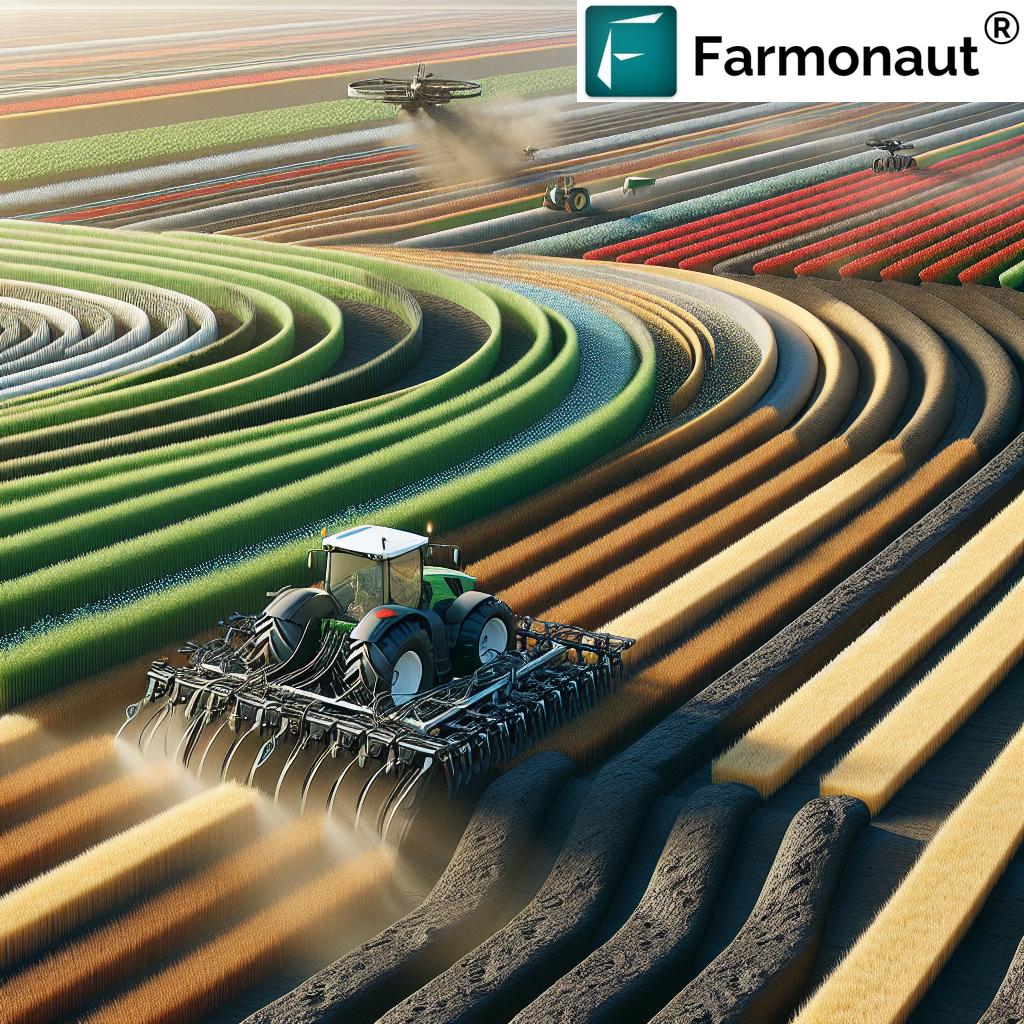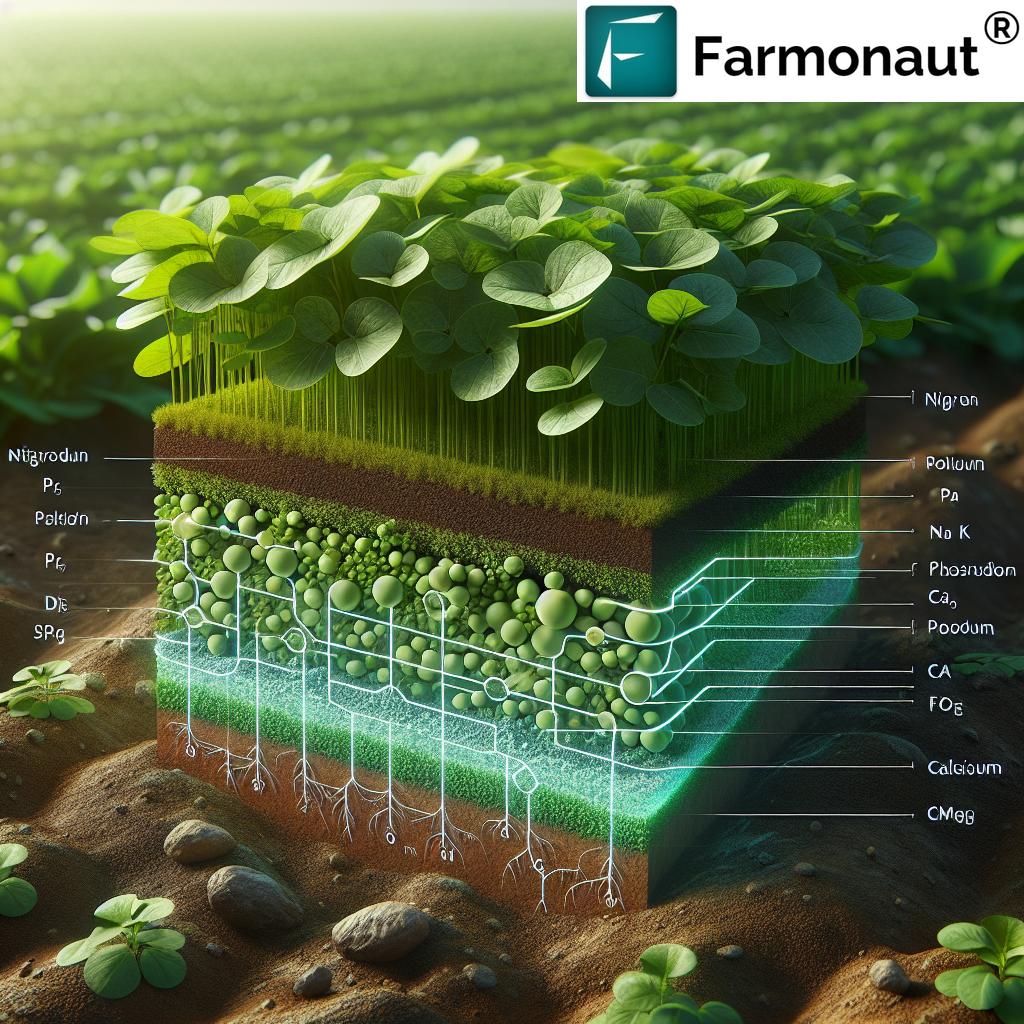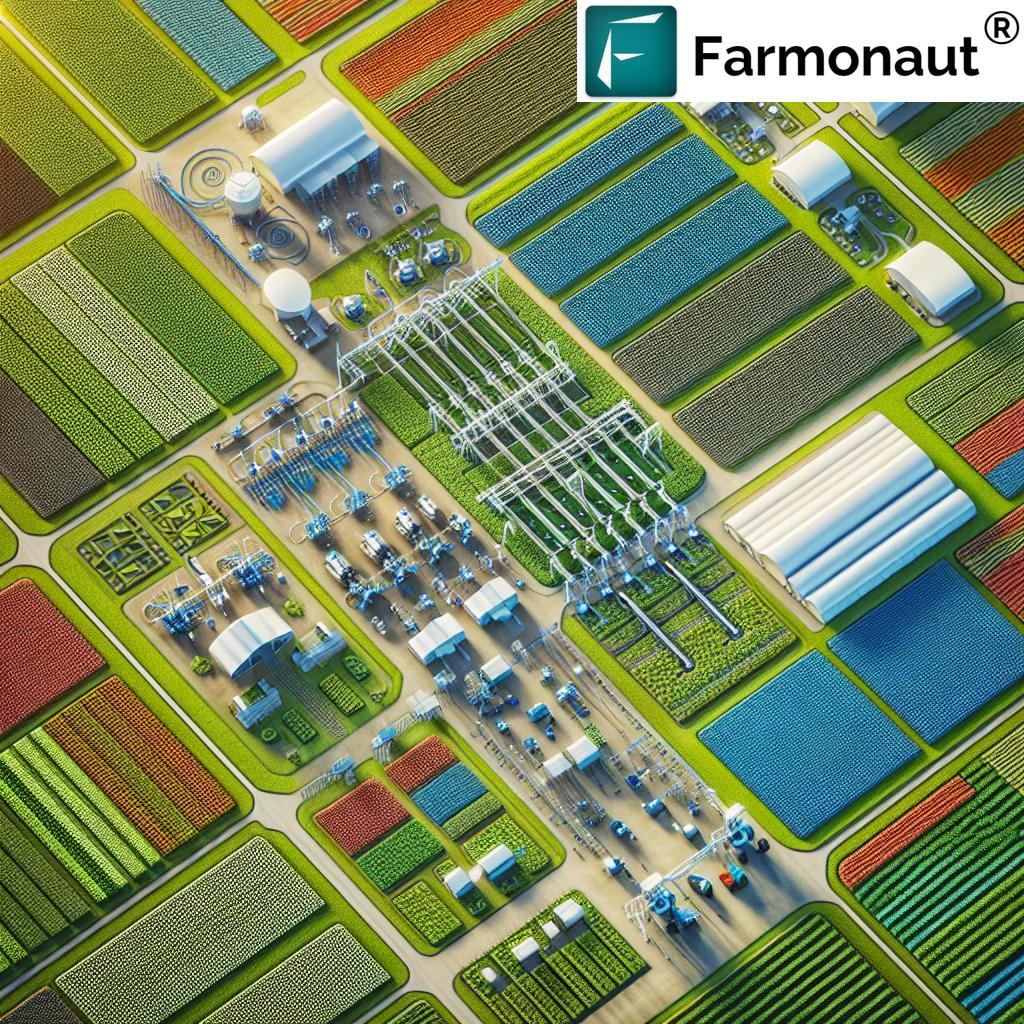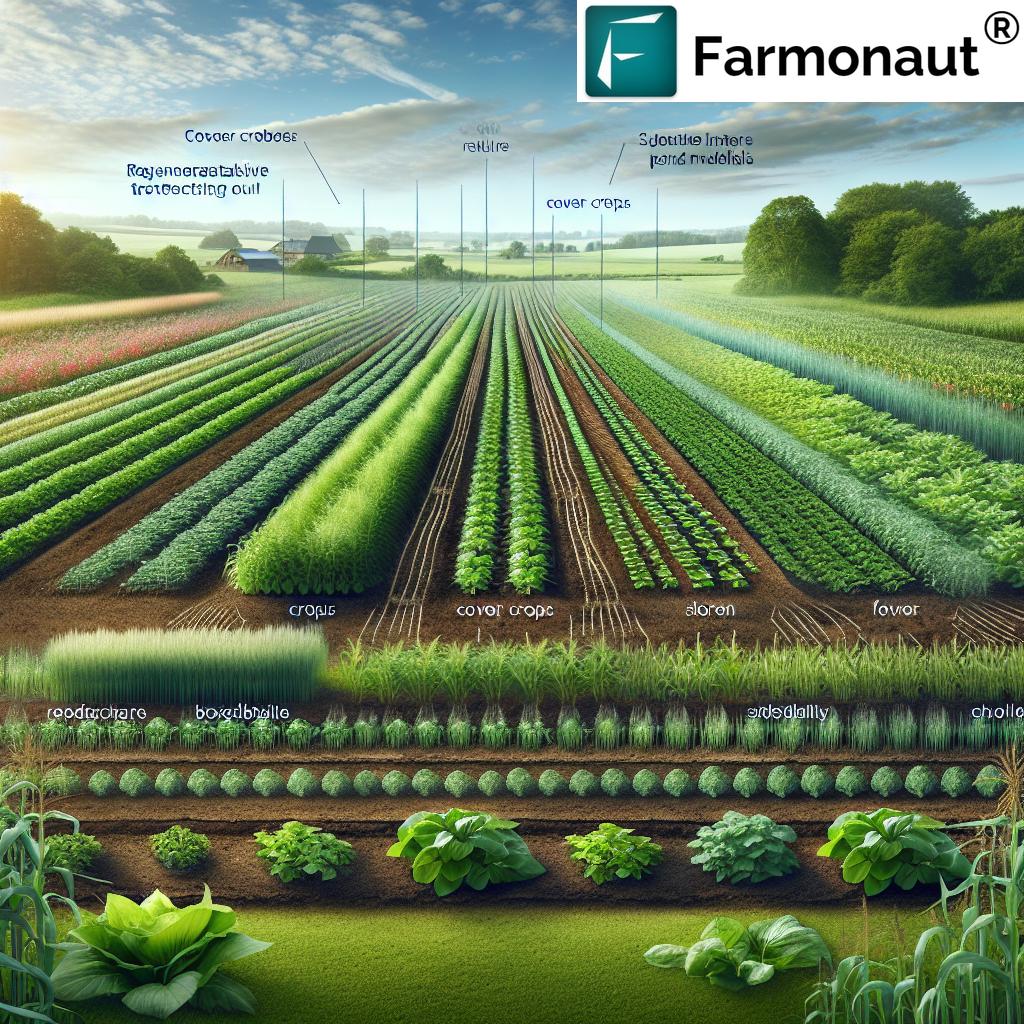Net Zero Farming: 5 Climate-Smart Strategies
“Adopting net-zero farming can cut agricultural greenhouse gas emissions by up to 50% globally.”
Understanding Net-Zero Farming
As sustainable agriculture gains global traction, the concept of net-zero farming stands out as a transformative solution to reduce the agricultural sector’s greenhouse gas emissions. But what does it really mean? Put simply, net-zero farming refers to agricultural practices that result in no net release of greenhouse gases into the atmosphere. This balance is achieved by implementing methods that either reduce emissions or increase carbon sequestration—the process of capturing and storing CO₂ through natural or technological solutions.
The primary goal of net-zero farming is to mitigate climate change without compromising agricultural productivity and sustainability. This comprehensive approach involves balancing greenhouse gases emitted (CO₂, methane, nitrous oxide) with those removed or sequestered from the atmosphere. By adopting sustainable agriculture practices and improving overall resource efficiency, net-zero farming offers actionable pathways for reducing emissions and enhancing environmental stewardship along the entire food production value chain.
A Comprehensive Approach to Sustainable Agriculture Practices
Achieving net-zero emissions in agriculture requires an integrated, holistic approach encompassing a variety of practices and strategies. These not only support carbon sequestration in farming but also reinforce soil resilience, promote biodiversity, and enhance farm economics. By improving the carbon balance in soils and crops, maintaining natural ecosystem functions, and utilizing advanced precision agriculture technologies, farmers can pave the way for a net-zero future. Harnessing these approaches is crucial for reducing the carbon footprint and ensuring long-term food security.
“Carbon sequestration in soil can store up to 2.6 gigatons of CO2 annually worldwide.”
5 Climate-Smart Net-Zero Farming Strategies
Let’s explore the key strategies behind effective net-zero farming. Each method plays a pivotal role in reducing greenhouse gas emissions in agriculture, improving soil health in agriculture, and strengthening resilience against climate change.
-
Agroforestry Integration: Trees for Carbon Sequestration and Ecosystem Health
Agroforestry, the practice of incorporating trees into agricultural systems, is one of the most powerful climate-smart farming strategies. By establishing silvoarable systems (i.e., integrating trees with arable crops), farms can sequester substantial amounts of carbon—approximately eight tonnes of CO₂ per hectare annually over 30 years (woodlandtrust.org.uk).
- Agroforestry for climate change mitigation: Trees act as carbon sinks, capturing more carbon from the atmosphere while also providing habitats that enhance biodiversity and improve soil structure.
- Benefits: Reduced soil erosion, better water retention, microclimate regulation, and added income from timber, fruits, or nuts.
- Integration examples: Alley cropping, shelterbelts, riparian buffers, and silvopasture systems.
Farmonaut’s Advisory: We encourage farmers to use platforms that provide tree detection and mapping (see our crop plantation and forest advisory), making it easier to monitor agroforestry activities at scale.
-
Cover Cropping and Rotational Practices: Building Soil Carbon and Resilience
Cover cropping involves planting non-harvested crops (e.g., legumes, grasses) during off-seasons. This practice improves soil health, minimizes erosion, and boosts soil carbon retention. Crop rotation—regularly rotating different crops seasonally—further supports healthy soils, interrupts pest cycles, and enhances long-term productivity (farmer-charlie.com).
- Cover cropping benefits: Increases organic matter, prevents nutrient loss, supports beneficial microorganisms, and reduces weed pressure.
- Rotational diversity: Healthier soils act as carbon sinks, sequestering carbon for extended periods.
- Positive impact: Enhanced soil structure, improved fertility, sustained yields, and reduced input needs.
Tip: Choose cover crops adapted to local conditions. Consider legumes (e.g., clover or vetch) for nitrogen fixation, or grasses (e.g., rye) for biomass.
-
Low-Till and No-Till Farming: Preserving Carbon and Soil Integrity
Traditional ploughing disturbs soil structure and releases stored carbon into the atmosphere. Low-till or no-till farming minimizes such disturbance, helping to preserve soil carbon and maintain healthy microbial activity (farmer-charlie.com).
- Soil conservation: Lower tillage reduces erosion, water runoff, and fossil fuel use.
- Carbon retention: Soils undisturbed by deep ploughing act as longer-term carbon stores.
- Ecosystem health: Favors beneficial fungi, bacteria, earthworms, and promotes soil biodiversity.
Tip: Pair no-till with effective residue management for optimal weed suppression and nutrient cycling.
-
Precision Agriculture Technologies: Enhancing Resource Efficiency for Net-Zero Farming
Precision agriculture technologies use satellite imagery, AI, and data analytics to optimize decision-making on the farm. By precisely applying water, fertilizers, and pesticides where and when needed, resource use is maximized and emissions are reduced (farmonaut.com).
- Precision agriculture for net-zero farming: Minimizes unnecessary inputs, lowers nitrous oxide emissions from fertilizers, and targets irrigation.
- Farmonaut’s platform uses real-time crop health monitoring, AI-powered advisory, and carbon footprint tracking, making sustainable practices measurable and actionable at scale.
- Outcome: Increased yields, reduced emissions, and enhanced profitability.
Explore: Try our carbon footprinting tool for real-time tracking of emissions and actionable insights into reducing your agricultural carbon footprint.
-
Renewable Energy Adoption: Transitioning Away from Fossil Fuels on Farms
Renewable energy for farms, including solar, wind, and biogas, is vital for reducing the carbon footprint of agricultural operations. By transitioning to renewable energy sources, farmers can significantly lower their reliance on fossil fuels for irrigation, heating, drying, and other processes (farmer-charlie.com).
- Direct emissions reduction: Lower on-farm and post-harvest emissions from fuel burning.
- Cost benefits: Savings on long-term energy costs and potential for revenue from surplus energy generation.
- Sustainable infrastructure: Solar-powered pumps, wind-driven aerators, and off-grid cold storage enhance farm resilience.
Tip: Assess your energy demand and explore government or local incentives available for renewable energy adoption.
Comparative Benefits Table of Climate-Smart Strategies
| Strategy Name | Estimated Emissions Reduction (%) | Contribution to Soil Health | Impact on Yield (Estimated Change) | Carbon Sequestration Potential (t CO₂/ha/year) | Additional Environmental Benefits |
|---|---|---|---|---|---|
| Agroforestry Integration | 15%–25% | High | +5–15% | ~8.0 | Enhances biodiversity, reduces erosion, buffers microclimate |
| Cover Cropping & Crop Rotation | 10%–15% | High | +3–8% | ~1.5 | Improves structure, reduces weeds, increases retention |
| Low/No-Till Farming | 8%–12% | High | +0–5% | ~1.2 | Prevents erosion, preserves microbiota, lowers input needs |
| Precision Agriculture Technologies | 12%–18% | Medium–High | +6–12% | Varies* | Reduces input wastage, optimizes resource efficiency |
| Renewable Energy Adoption | 18%–30% | Medium | Neutral | ~0.8 | Cuts fossil fuel use, supports sustainable rural economies |
| *Depends on site-specific technologies and management choices. Estimates are based on published research and major demonstration projects. | |||||
Benefits of Net-Zero Farming
The adoption of climate-smart farming strategies and net-zero principles in modern agriculture delivers vastly improved outcomes for ecosystems, the economy, and rural livelihoods. Here’s how:
- Climate Change Mitigation: By both reducing greenhouse gas emissions and enhancing carbon sequestration in farming, net-zero systems significantly contribute to mitigating climate change.
- Improving Soil Health in Agriculture: Practices like cover cropping, no-till, and crop rotation enhance soil structure, microbial life, and fertility, creating resilient agricultural systems.
- Enhances Biodiversity: Agroforestry integration and diverse crop portfolios support a broader array of pollinators, natural pest controllers, and wildlife.
- Resource Use Efficiency: Precision agriculture technologies drive sustainability by reducing fertilizer, water, and pesticide usage without sacrificing yield.
- Improved Economic Resilience: Lower input costs, new revenue streams (e.g., solar, carbon credits), and enhanced yields strengthen farm profitability even during volatile market or weather conditions.
- Environmental Stewardship: Promotes healthier rivers, reduced water pollution, and richer rural landscapes—benefiting the entire community.
Challenges and Considerations in Adopting Net-Zero Farming
While the benefits of net-zero farming are clear, the transition is not without its challenges:
- Initial Investment: Acquiring new equipment, renewable energy systems, or precision tools can require substantial upfront costs.
- Education and Training: Implementing unfamiliar methods requires ongoing learning and capacity-building for farmers and farm managers.
- Policy and Incentives: Adoption is often influenced by available supportive policies, government grants, and carbon pricing mechanisms.
- Location-Specific Solutions: The optimal mix of strategies varies with local climate, soils, crops, and socio-economic factors.
- Measurement and Verification: Accurate tracking of emissions and carbon sequestration remains a technical hurdle for some technologies.
Solutions exist to ease the transition: explore state or national programs, consider phased implementation, and use free or subsidized training resources. Measurement can be streamlined with advanced digital platforms and satellite-driven solutions.
The Role of Farmonaut in Precision and Net-Zero Farming
We at Farmonaut are committed to empowering the agricultural community with affordable precision agriculture and sustainability tools—enabling farms to play an active part in net-zero transitions and climate-smart farming strategies worldwide.
-
Carbon Footprinting Tool
Our solution allows farms and agribusinesses to monitor and reduce their carbon emissions through real-time satellite-based insights. The intuitive dashboard visualizes emissions sources, progress towards targets, and options to enhance sequestration. -
Blockchain-Based Traceability
By providing secure, end-to-end visibility from farm to table, our blockchain system validates sustainable production practices—improving transparency and trust in the food supply chain. -
Large-Scale Farm Management
Designed for agribusinesses and cooperatives, our scalable platform supports satellite-based monitoring of crop health, water use, and more, helping managers implement efficient net-zero strategies across extensive landscapes. -
Crop Plantation & Forest Advisory
Our advisory features—including AI-based recommendations—assist in tree planting, monitoring tree health, and helping with agroforestry integration for climate change mitigation. -
Fleet and Resource Management
Optimize transport and machinery use to cut emissions, lower costs, and boost environmental sustainability on and off the field. -
Crop Loan and Insurance Verification
Use satellite data for efficient loan/insurance verification, reducing risk and making financial resources more accessible for sustainable improvements.
Explore our API for seamless integration into enterprise and research systems:
Farmonaut API | Developer Docs
Farmonaut Pricing and Subscriptions
Frequently Asked Questions – FAQ
What is net-zero farming?
Net-zero farming is an approach where the greenhouse gases emitted by agriculture and farming are balanced against those removed from or sequestered in the atmosphere. This involves adopting sustainable agriculture practices that reduce emissions or increase carbon sequestration.
How does agroforestry support climate change mitigation and sustainability?
Agroforestry integrates trees with crops or livestock, enhancing carbon sequestration in farming, reducing soil erosion, boosting biodiversity, and regulating microclimates—making it one of the most effective climate-smart strategies.
Why is cover cropping important for soil health and carbon retention?
Cover cropping prevents erosion, suppresses weeds, fixes nitrogen (if legumes are used), and builds organic matter—turning soils into powerful carbon sinks and improving fertility.
Is precision agriculture really necessary for net-zero goals?
Yes, precision agriculture technologies ensure that resources like water and fertilizer are applied optimally, reducing unnecessary input use, emissions, and costs. It’s foundational for measurable progress toward net-zero targets.
How does renewable energy adoption impact a farm’s emissions?
Shifting to renewable energy for farms (solar, wind, biogas) replaces fossil fuel usage for powering operations—directly lowering the agricultural carbon footprint and supporting energy independence.
How can I track my farm’s carbon footprint?
A digital platform, like Farmonaut’s carbon footprinting tool, offers step-by-step guidance and real-time data on emissions sources and sequestration opportunities, helping you measure, reduce, and report emissions with confidence.
Conclusion: Advancing Toward Net-Zero in Sustainable Agriculture
Net-zero farming is not just a buzzword; it is a necessary, actionable approach for ensuring sustainable food production, mitigating climate change, and preserving soil and ecosystem health for future generations. By integrating agroforestry for climate change mitigation, cover cropping benefits, low-till/no-till methods, precision agriculture technologies, and renewable energy for farms, the agricultural sector can make measurable progress toward a low-carbon future.
The path to net-zero in farming may present challenges—especially in terms of training, investment, and measurement—but the benefits far outweigh the hurdles. As new policy incentives, digital technologies, and market opportunities arise, it becomes increasingly practical for farmers, agribusinesses, and entire regions to adopt climate-smart, net-zero strategies and set the standard for responsible stewardship of our planet.
At Farmonaut, we are dedicated to supporting every step of your sustainability journey, making precision agriculture, carbon monitoring, and climate resilience possible for farms of every shape and size. Join the net-zero revolution—let’s cultivate a future where agriculture regenerates ecosystems, boosts food security, and leaves a lasting, positive impact on our world.






















